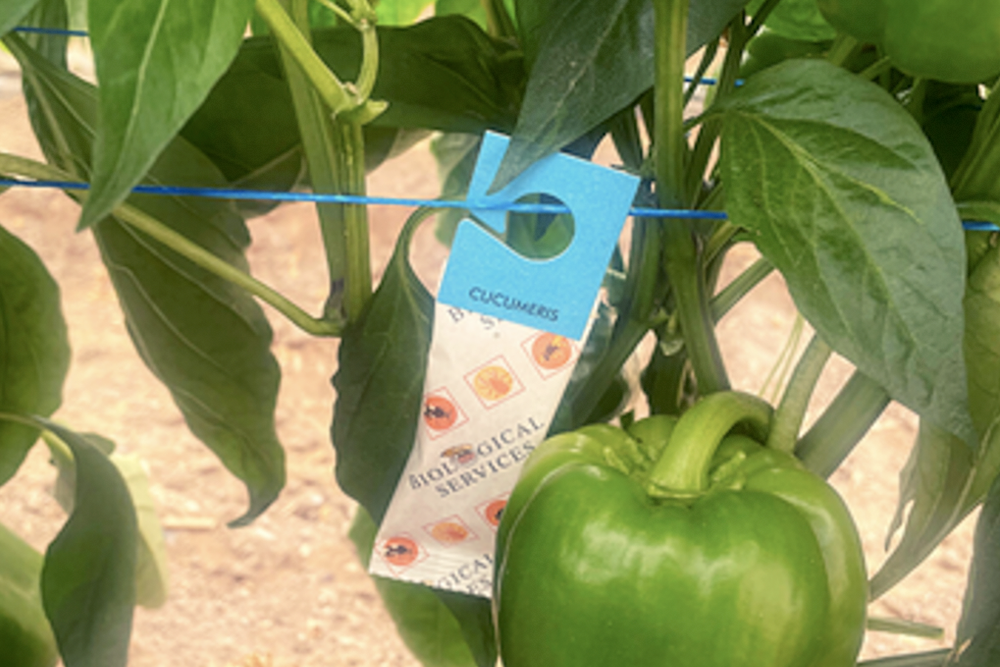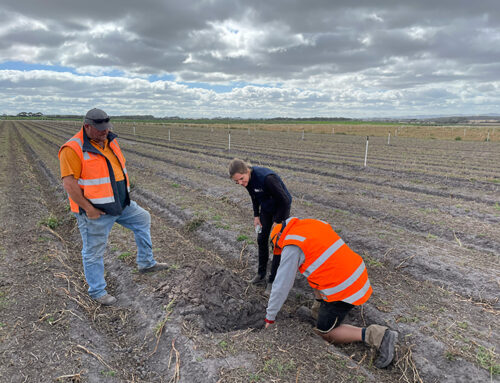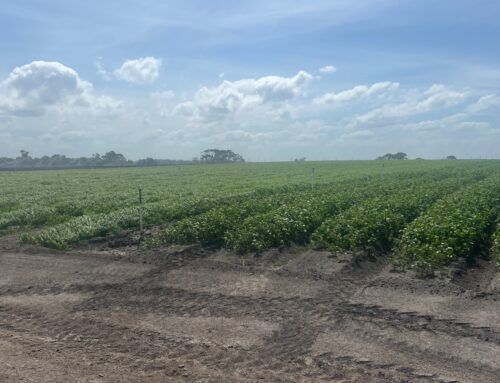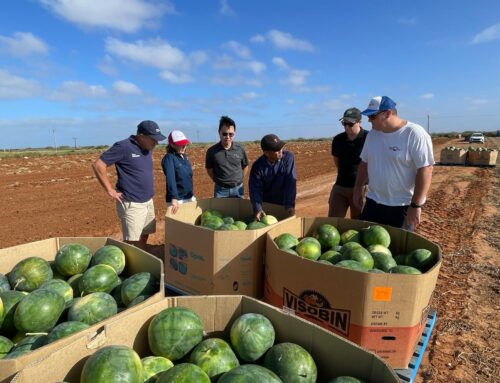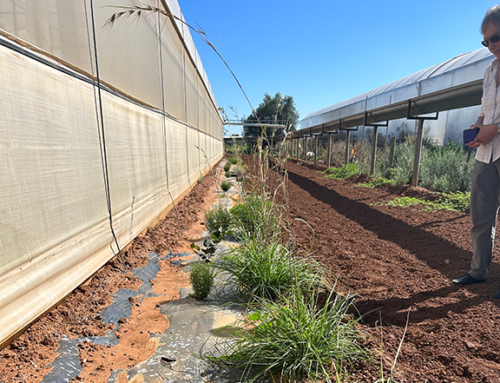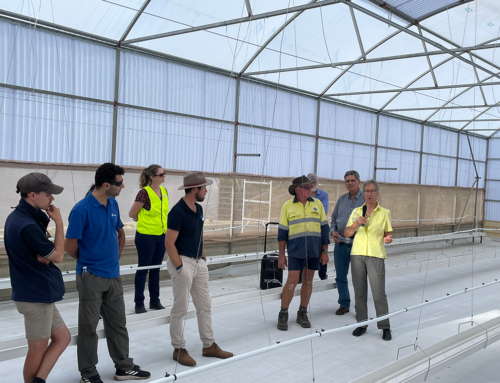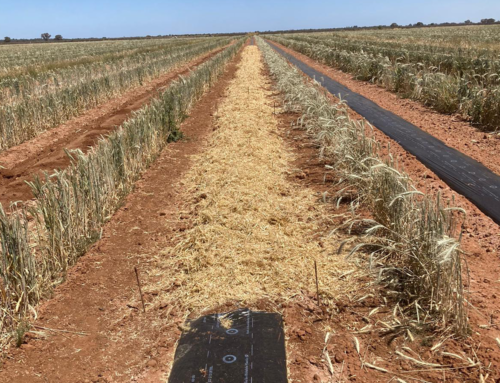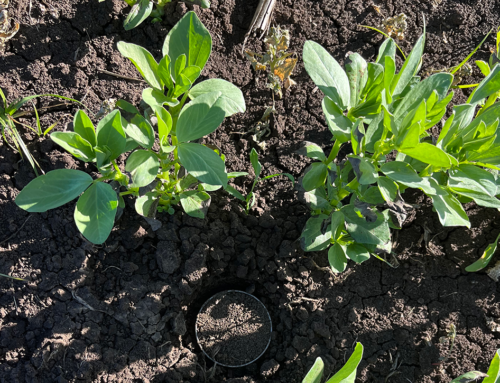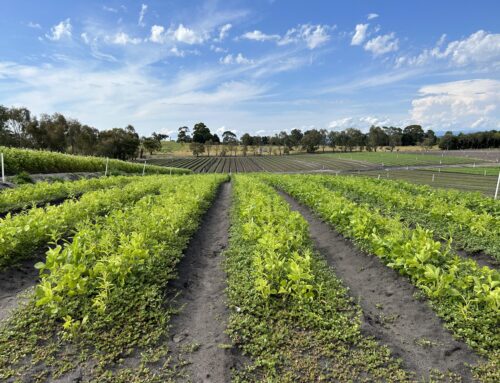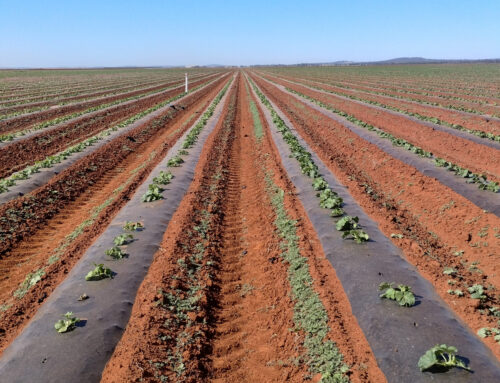The slow-release of predatory mites using sachet technology is being trialled in Australia to improve commercial integrated pest management (IPM) practices.
Biological Services, a commercial insectary and beneficial insect provider based in South Australia, Western Australia and Queensland, is trialling the sachet packaging with the predator mite Cucumeris. This beneficial is effective in controlling thrips in crops such as cucumber, capsicum and eggplant.
Biological Services Director James Altmann said the sachets provide an even placement and continuous emergence of predators for about four weeks.
“The standard approach for releasing most predatory mites into crops has been with loose material shaken over the plants,” James said.
“This approach will continue to be used for many situations but applying loose materials is often difficult to calibrate, and we know that the more even the distribution over the crop, the better the results.
“The formulation inside the sachet provides a continuous release of predators, reducing the need for multiple applications of loose material. A hook is attached to each sachet and growers simply hang them every few meters on a leaf-stem, string or wire. The mites walk out onto the crop from a small hole at the top of each package.”
Monitored field trials are currently underway with commercial growers with the aim to expand the range of predators available in sachets in early 2023, including Californicus for spidermites and Montdorensis for whitefly/thrips.
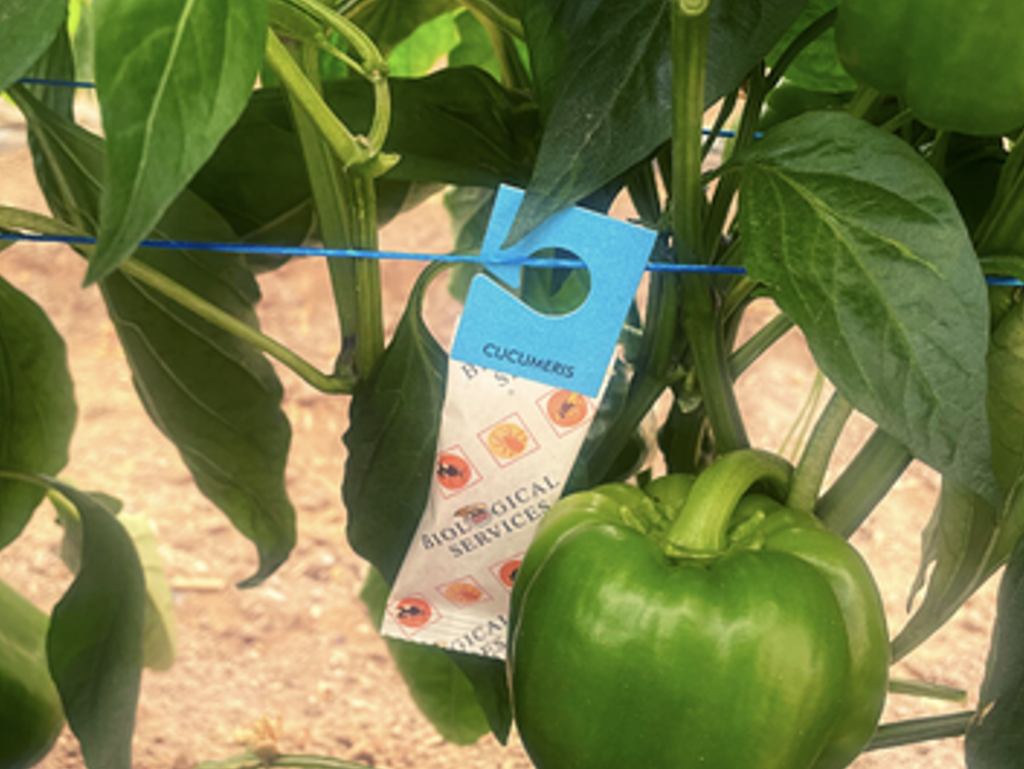
Figure 1: The trial of Cucumeris sachet technology in capsicum.
Sustainable transport for beneficials
Biological Services has also introduced sustainable packaging for the thrips predator Orius, commonly used in capsicum crops.
The original plastic packaging has been replaced with a biodegradable label and cardboard cup with a removable lid. The packaging allows better breathability and includes a gel formulation which provides an extra source of water and nutrition for the 2,000 adult predatory bugs during transport so they can establish more quickly in a crop.
“This means the Orius are more active when they arrive and we have noticed an increase in predator activity and initial establishment. This is good news for growers, particularly those in high thrip and virus areas,” James said.
The packaging can be left in the crop and removed with plants at the end of the crop cycle.
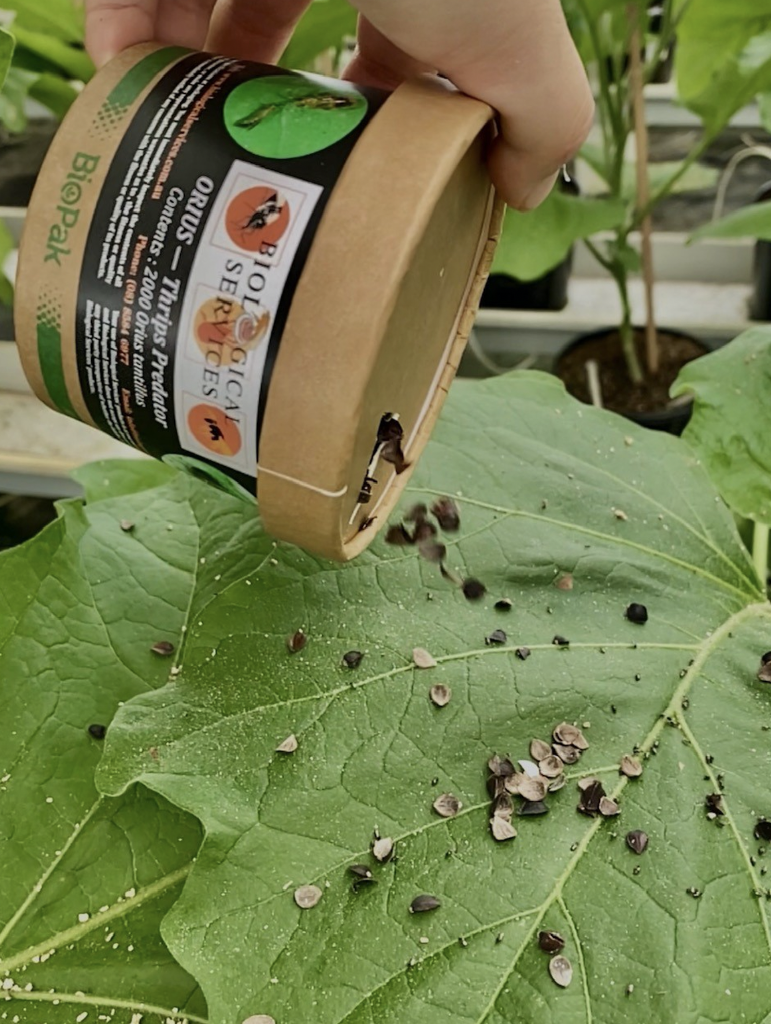
Figure 2: New sustainable packaging for beneficial insects.
More information
For more information contact Biological Services on 08 8584 6977 or info@biologicalservices.com.au .
You can also search for integrated pest management resources on the Soil Wealth ICP website at https://soilwealth.com.au/search/

